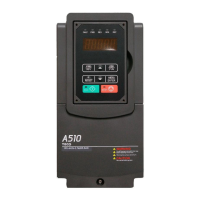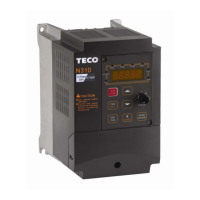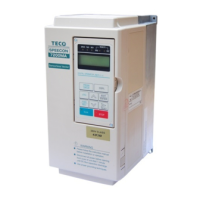3-7
3.6 Wiring Peripheral Power Devices
After power is shut off to the inverter the capacitors will slowly discharge. Do NOT touch and of
the inverter circuitry or replace any components until the “CHARGE” indicator is off.
Do NOT wire or connect/disconnect internal connectors of the inverter when the inverter is
powered up or when powered off and the “CHARGE”” indicator is on.
Do NOT connect inverter output U, V and W to the supply power. This will result in damage to the
inverter.
The inverter must by properly grounded. Use terminal E to connect earth ground and comply with
local standards.
Do NOT perform a dielectric voltage withstand test (Megger) on the inverter this will result in inverter
damage to the semiconductor components.
Do NOT touch any of the components on the inverter control board to prevent damage to the inverter
by static electricity.
Refer to the recommended wire size table for the appropriate wire to use. The voltage between
the power supply and the input of the inverter may not exceed 2%.
Phase-to-phase voltage drop (V) = 3 ×resistance of wire (Ω/km) × length of line m) × current×10
-3
.
(km=3280 x feet) / (m=3.28 x feet )
Reduce the carrier frequency (parameter 11-01) If the cable from the inverter to the motor is
greater than 25m (82ft). A high-frequency current can be generated by stray capacitance
between the cables and result in an overcurrent trip of the inverter, an increase in leakage
current, or an inaccurate current readout.
To protect peripheral equipment, install fast acting fuses on the input side of the inverter. Refer to
section 11.6 for additional information.

